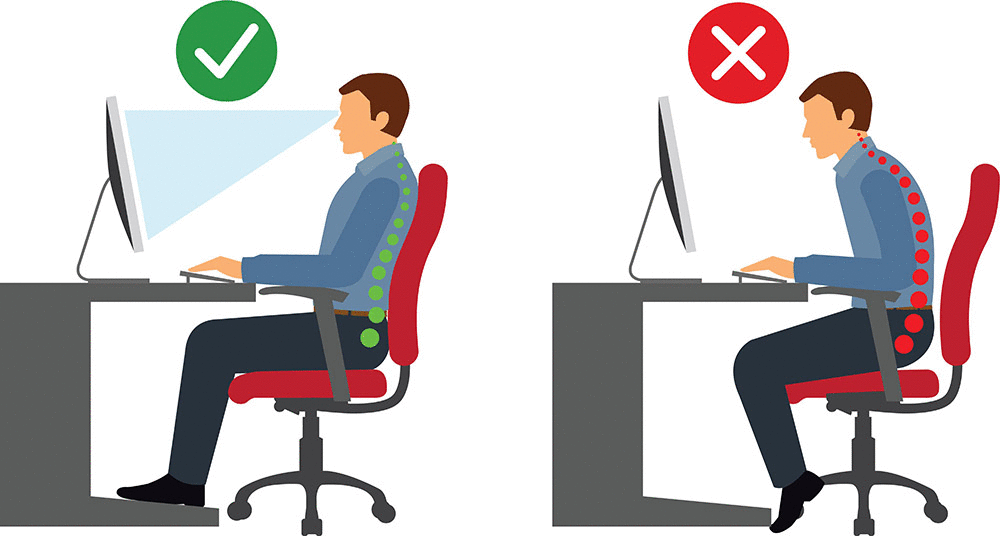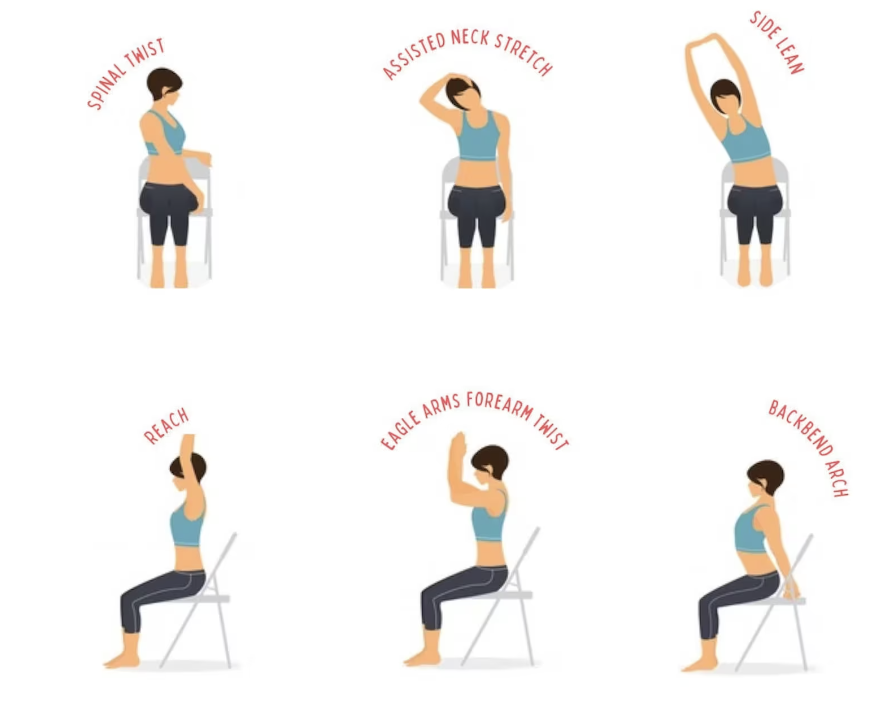Often people come see us with pain in clinic and pass of that it’s likely due to their “terrible posture”.
But, what is good posture?
Automatically we think sitting or standing upright with our shoulders down and back and head held tall. However, if we were to sit or stand with the best posture all day, it would be mighty exhausting for all our muscles to maintain that for such a long time, which could cause just as much pain as adopting a bad posture.
So, if both the best posture and worst posture can cause pain, how do we win and be pain free?

Well, changing posture and positioning regularly is best to get our muscles and joints moving and prevent fatigue. We encourage a regular change of posture and position every 30-60 minutes to prevent aches and pains from developing.
If you’re stuck in the office, try setting a 30 minute reminder or timer to prompt you to change position or move.

Mind you, if you adopt a bad posture at the desk and sustain that for a period of time, it definitely could be a culprit for your neck and back pain.
So, if it’s not purely posture that’s contributing to your neck and upper back pain, what else could be causing it?
A recent study (Kazeminasab et al. 2022) looked at the risk factors for developing neck pain and you might be surprised by what they found…
The study highlighted that both psychological and biological factors can contribute to the onset of neck pain, including:
Psychological:
- Stress and anxiety
- Depression and low moods
- Cognitive variables
- Sleep problems
- Social support
- Personality & beliefs
- Behaviour
Biological:
- Neuromusculoskeletal disorders
- Autoimmune diseases
- Genetic
- Gender
- Age
If you are a poor sleeper or a bit of a stress head, it may be worth looking into some management strategies to help improve these factors and control some of the risk factors which are currently controlling you and may be contributing to your pain.
As we come into the cooler weather, it’s also a common time for neck and upper back pain to present. This can be due to a number of things. A natural reaction to cold temperatures is to hunch and curl up to keep us warm, which isn’t an ideal posture… and as discussed holding this for a period of time can cause pain. The cold weather also causes stiff joints, muscles to tighten, constriction of blood vessels and a reduction in blood flow, which can cause muscle soreness and pain.

So, as we come into the cooler weather, it’s important to stay warm. Dressing warm with plenty of layers, a hot shower, regular movement and heat bags are great for this.
One of my absolute favourite products for neck pain especially in desk workers are the Wili neck wraps. It’s a heat bag but in the shape of a neck pillow so it sits snug around your neck, allowing you to still work and do daily activities whilst reaping the benefits of heat therapy and muscle release. Essentially, it’s pain relief… but make it functional.
Whilst these modalities are great for quick pain relief, the number one thing we can do to prevent neck, thoracic and postural pain is to strengthen our muscles. Building postural strength in our back, shoulders and deep stabilising muscles means our muscles have a better capacity to sustain higher loads and demands without getting fatigued. Strength helps to maintain and sustain improvements and prevent recurring pain.
A good, supportive pillow is also beneficial. It helps support our cervical and thoracic joints, offloading our surrounding muscles and enables them to ‘switch off’ during sleep to replenish. Check out our pillow stock online here or chat to our physios about what pillow they may recommend for you.

If you need some treatment for your pain, or would like some home exercises to assist, come see us in clinic and let’s get rid of that pain in your neck!
Visit our social media profiles for some easy stretches that you can perform at the desk at work or to check out the Wili neck wraps that we stock in clinic.
~ Sophie Alderslade, Physiotherapist
References:
Kazeminasab, S., Nejadghaderi, S.A., Amiri, P., Pourfathi, H., Araj-Khodaei, M., Sullman, M.J.M., Kolahi, A.A. & Safiri, S. 2022, Neck pain: global epidemiology, trends and risk factors, BMC Musculoskelet Disord 23, 26, https://doi.org/10.1186/s12891-021-04957-4.



